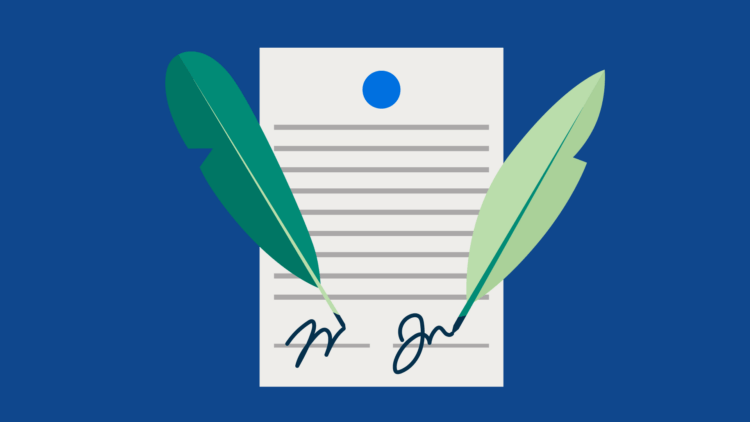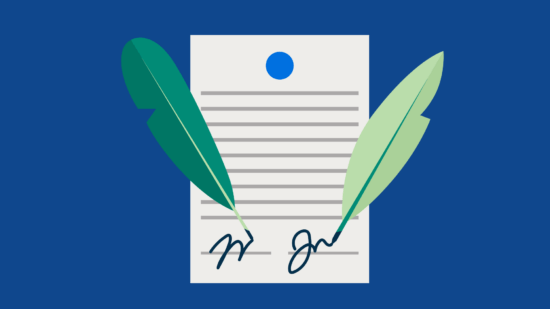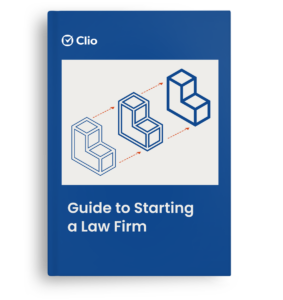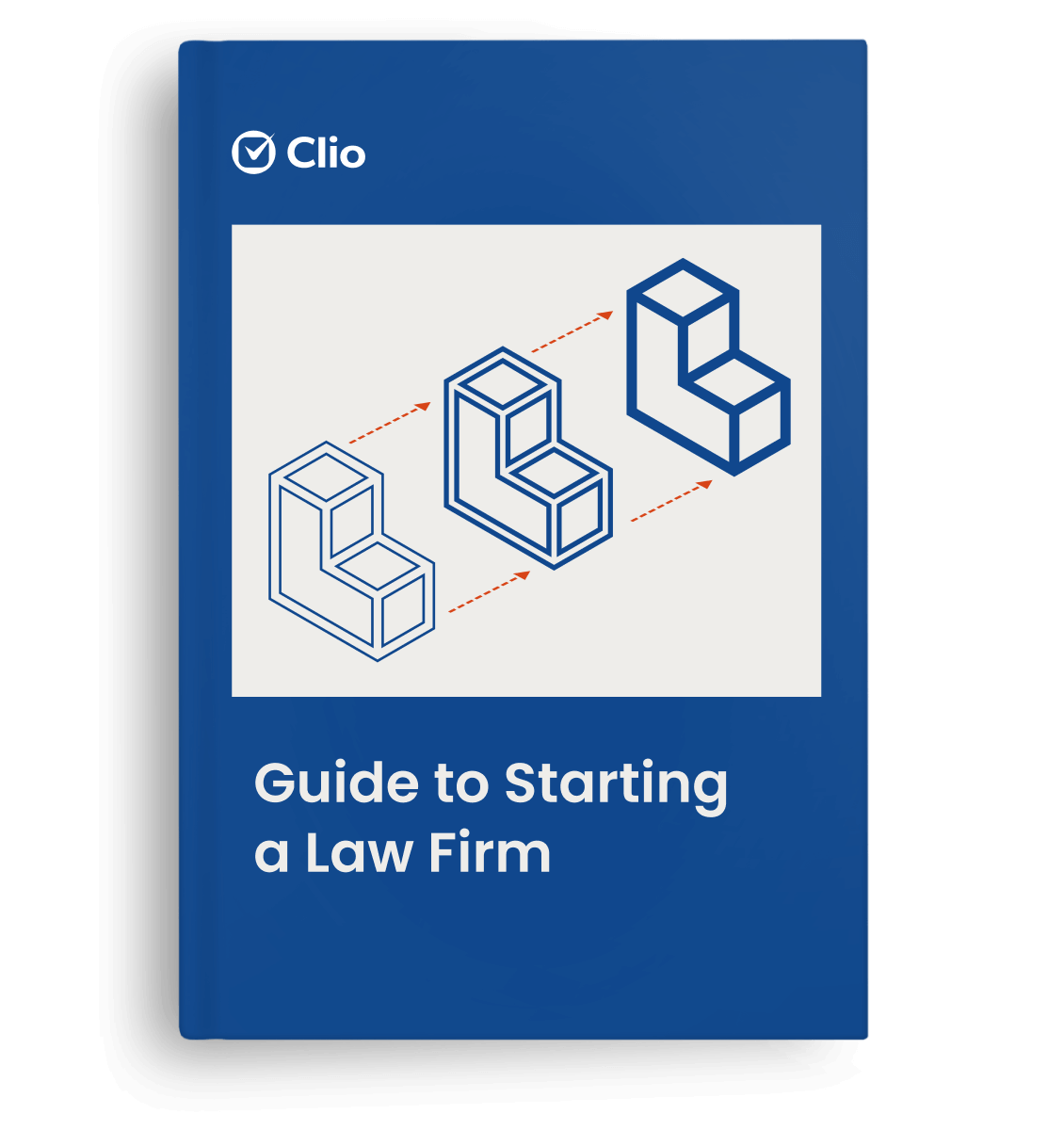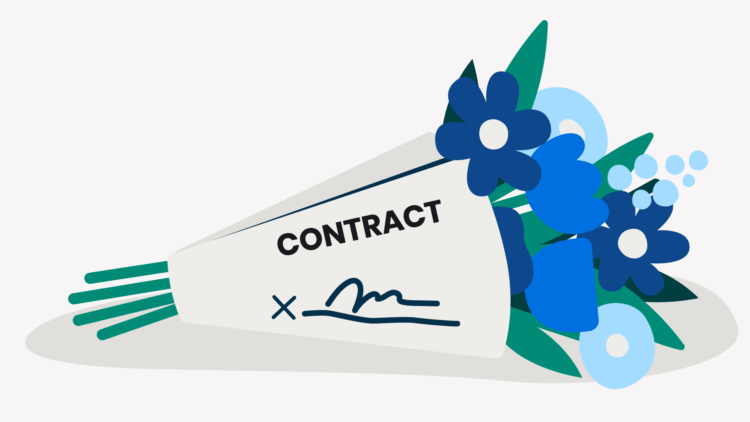Business-client relationships can be complex. Miscommunication drives conflict and, ultimately, the breakdown of otherwise fruitful connections. For this reason, an engagement letter can be a game-changer for many professionals and their clients.
When a company goes into business with a client, an engagement letter puts the parameters of the relationship into writing. A strong engagement letter gives clients clear boundaries of what they can expect while also protecting the business from misunderstandings—especially when it comes to lawyers and their clients.
Running a client-centered law firm means prioritizing your clients and their experiences. Managing client expectations and communicating clearly are essential to productive lawyer-client relationships: When clients know what to expect, they’re more likely to have a positive client experience. Starting your experience with an engagement letter, and concluding with a closing letter to your client, sets you up for a positive experience that ensures all parties are aligned.
Additionally, having the details of a client relationship and scope of service in writing can help protect attorneys from liability and potential malpractice claims.
Below, we’re diving into the essentials of engagement letters for lawyers. Read on to learn how to create a strong letter of engagement for legal clients.
What is an engagement letter?
An engagement letter serves as a formal written agreement outlining the business relationship between a client and a company. This document specifies the scope of the agreement, its terms, and associated costs. Essentially, the purpose of an engagement letter is to establish clear expectations for both parties involved in the agreement.
How do engagement letters work?
Engagement letters put the details of a company-client relationship into writing. Though they are less formal than a traditional contract, engagement letters are still official, legally-binding agreements—and a well-structured, detailed engagement letter is a valuable document for everyone involved.
Engagement letters are typically created and signed at the beginning of a client relationship, though they may be reviewed, updated, and signed at a regular interval (often annually) for long-term relationships. New engagement letters may also be created for an existing client if the scope of work changes.
Ethics of engagement letters
While written engagement letters are often not mandatory for lawyers, Rule 1.5 (b) of the ABA’s Model Rules of Professional Conduct notes the importance of promptly communicating details of the scope of representation to the client, ideally in writing:
“The scope of the representation and the basis or rate of the fee and expenses for which the client will be responsible shall be communicated to the client, preferably in writing, before or within a reasonable time after commencing the representation, except when the lawyer will charge a regularly represented client on the same basis or rate. Any changes in the basis or rate of the fee or expenses shall also be communicated to the client.”
Fee agreements and engagement letters
Additionally, written agreements are required for contingency fee agreements. Specifically, ABA Model Rule 1.5(c) specifies that contingency fee agreements must be in writing, signed by the client, and “shall state the method by which the fee is to be determined, including the percentage or percentages that shall accrue to the lawyer in the event of settlement, trial or appeal; litigation and other expenses to be deducted from the recovery; and whether such expenses are to be deducted before or after the contingent fee is calculated.”
Beyond the ABA Model Rules, it’s always a good idea to check the rules of professional conduct for your jurisdiction (some states, for example, require written engagement letters) to know the requirements for engagement letters to follow.
Engagement letters can also be useful when it comes to issues of confidentiality, privacy, and security between lawyers and clients. In addition to including specific language pertaining to any special measures to be followed during the engagement, by putting a lawyer-client relationship into writing, engagement letters also solidify the date in which attorney-client confidentiality is invoked.
What should be included in an engagement letter?

When determining exactly what to include in an engagement letter for lawyers, first think about the letter’s primary goal—e.g., to clearly and succinctly describe the parameters of a business relationship.
With this in mind, here are just some of the common elements that engagement letters for lawyers may include:
Engagement details
Specify who the client is and who will be representing the client, and include all necessary identifying information (such as names, addresses, and contact details). This information can be especially important when representing a client within a larger organization.
Staffing details
Clearly specify any personnel (such as the names of attorneys, paralegals, staff members, or subcontractors) who may work on a case and their hourly rates.
Scope of services
Fully outline the scope of services that may be provided (this could be whether services include consultation, transactional services, litigation, etc.) and in what practice area, as well as any potential limitations or work that won’t be provided within the scope of work.
By setting clear expectations of what the client and (and cannot) expect from your relationship, you can avoid misunderstanding and potential conflict throughout the relationship (for example, if a client claims that you should have done something more for them, but it is clearly outside of the agreed scope of work).
Changes to scope of services
Outline exactly how representation could change (for example, if developments in the case were to cause changes to the scope of work outside of the original agreement) and, should this occur, what the client can expect to address and approve any such changes.
Payment terms and fee structure
Include all details related to payment—such as fees (like the hourly rates for lawyers and any other identified staff who may work on the case), expenses that the client may be responsible for, and billing procedures and structure (such as when and how often clients will be billed, and accepted payment methods).
The letter should also outline what would happen if a payment is late or missed and what happens if the attorney-client relationship ends.
Communication details
As we already noted, attorneys have a responsibility to keep clients reasonably informed on the status of their legal representation. Engagement letters can help set and manage client expectations for law firm client communications. Detail how often the firm will communicate with clients, what those communications will entail, and which channels clients can reach lawyers at (for example, phone or email).
Also specify any parameters to be followed when it comes to client confidentiality, proprietary information, privacy, or security considerations (for example, the letter could specify which communication channels should be used when sharing privileged information).
Dates, service terms, and period of engagement
Specify the exact dates for the agreed period of engagement with the client (this could be a specific date range, or from a certain date until the service is completed), as well as any clauses outlining potential reasons why the agreement could be considered terminated.
Conflict disclosure
When writing an engagement letter, it’s also a good idea to clearly identify, explain, and urge clients to consider any and all potential conflicts that could come up during the lawyer-client relationship. Be sure to run a conflict check (and consult the ABA Model Rules and your jurisdiction’s rules) to identify any potential conflicts and address them with your client before moving forward.
Responsibilities
To avoid potential confusion, the engagement letter can also outline any necessary specific responsibilities—both for the law firm and the client (for example, if the client is required to provide certain information to the lawyer).
Terms and conditions
Include details for any terms, conditions, or special agreements (such as retainers or contingency agreements) that may be invoked during the engagement term.
Disputes
Provide details for the procedure that will be followed if disputes arise between the parties (for example, if the lawyer and client disagree regarding the charges on a bill).
Document and file retention policies
Share how a client’s documents and files will be handled, including how long a firm will maintain client files, whether records will be returned, and how long client materials will be kept, per your jurisdiction’s rules. The letter may also specify client responsibilities for preserving documents, if necessary.
Signature and date lines
For an engagement letter to be valid, it should be reviewed and signed by both the lawyer and the client.
While the above factors are worth considering, it’s important to note that this is just a starting point. The point of an engagement letter is to include all relevant details, so customizing it to the needs and details of a specific client and situation is essential.
You may like these posts
Tips for writing a solid law firm engagement letter
The key to a great engagement letter for lawyers is to create a professional, clear, and useful document that will provide an excellent client experience for clients, which can in turn lead to more business for a law firm.
Here are some tips for creating the best possible engagement letters:
Set expectations for the legal experience up-front
For many clients, dealing with a legal matter can be stressful. Not knowing what to expect can make the experience feel confusing and scary. By providing details about what to expect, clients can start with the assurance of clear expectations. Include details from communication standards to costs to what services the relationship may include.
Make it clear
When writing an engagement letter, clarity is key. While it’s important to be specific and provide detail, avoid unnecessary legal jargon. Keep the letter succinct when possible to ensure it’s as straightforward as possible for clients.
Personalize it
It makes sense to have an established structure for law firm engagement letters. However, it’s also important to customize and personalize each letter for each client. Make sure the letter includes details specific to the client, and ensure that it comes from the right person.
Make sure there are no mistakes
An engagement letter sets the tone for the working relationship with clients. It’s crucial that it conveys a high level of professionalism. From incorrect client data to typos, errors can make a poor impression. Take care to double-check that the letter is correct and free from mistakes.
Tip: Using automation tools can help reduce manual errors when creating and sending documents like engagement letters.
Save time with templates
Legal document templates can be a good starting place to save time and reduce errors—especially with engagement letters for lawyers.
It’s important for attorneys to first consult their jurisdiction before using a template to ensure they follow any rules. However, templates can provide a good starting point that allows firms to send out customized, professional letters quickly and efficiently.
Engagement letter examples
Checking out examples of engagement letters for lawyers (like this attorney engagement letter template from eForms or this sample engagement letter from the South Carolina Bar) is a good place to start for engagement letter inspiration (just be sure to customize it!).
Additionally, while an engagement letter is a useful way to establish a clear and productive relationship with clients at the start of a relationship, legal client letters can also be useful communication tools when ending or forgoing a client relationship.
Two common types of letters that lawyers should be familiar with are:
- Non-engagement letters: This letter informs prospective clients that an attorney will not be representing them. Learn more about non-engagement letters here.
- Disengagement letters: This letter officially ends an existing client relationship. Read more about closing letters to clients here.
Harnessing automation: Tools for creating engagement letters quickly and easily
It’s important for lawyers to focus on the specific details and content of engagement letters. Still, that doesn’t mean that each one has to be a time-consuming task. By using automation tools to streamline the process, lawyers can free up time that they can spend serving clients.
Clio Draft: For creating personalized engagement letters quickly
Clio Draft’s cloud-based document automation software makes it easy to turn a firm’s existing Word files into reusable templates. Firms can also automatically populate their Clio Draft templates with appropriate client and matter information, straight from Clio Manage.
This means that law firms can easily create law firm engagement letter templates quickly, easily. And, with less risk of manual error. Firms can also send, receive, and track legal documents that require e-signatures, too.
Clio Grow: For ensuring letters are sent out on time
Clio Grow’s client intake automation features can help law firms further streamline the process, making it easy to send out engagement letters quickly and correctly to clients.
At Evolve Family Law, for example, onboarding specialist Jayda Brimble uses Clio Grow to send templated engagement agreements to new clients as part of a streamlined client intake process.
“Having all my communications templated—and having everything I need ready to go—has made my life easier. Client communications through Clio Grow are super quick,” Jayda explains.
Final thoughts on law firm engagement letters
A great client-centered relationship is key to the success of any business, but it’s especially important for law firms. One of the best ways to establish a positive client experience is by establishing clear expectations.
Clients want to know exactly what their legal experience will look like. A solid law firm engagement letter puts the details of those expectations in writing, right from the start. These clear boundaries lead to a more positive client experience. Furthermore, they help reduce the potential for miscommunication or liability for lawyers.
Engagement letters may feel like an extra step at the beginning of a lawyer-client relationship. However, the small time investment can provide major benefits for lawyers and clients in the long term. And, by spending some time creating a thoughtful process and using automation tools like Clio Grow and Clio Draft to streamline workflows, engagement letters can be a quick and effective step in a firm’s client intake process.
We published this blog post in June 2023. Last updated: .
Categorized in: Business

